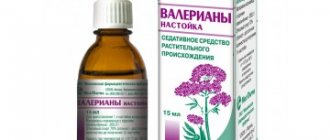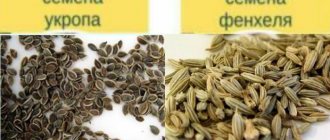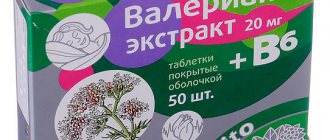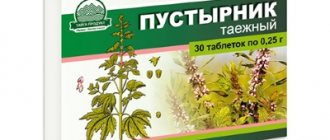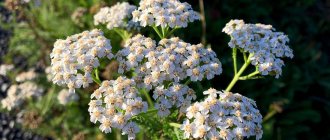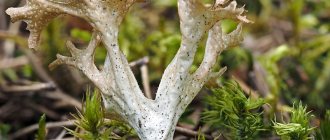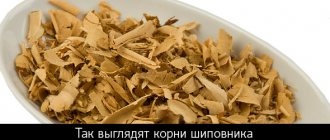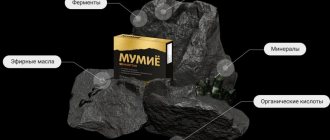pharmachologic effect
Valerian root has a sedative and antispasmodic effect on the body, reducing the level of excitability of the central nervous system. There is an antispasmodic effect on the smooth muscles of the digestive organs and urinary system.
The drug helps normalize the onset of sleep. In this case, the sedative effect appears gradually and relatively slowly, but is stable.
The drug produces a choleretic effect, activates the secretion of the gastrointestinal tract, and promotes the dilation of coronary vessels. With prolonged use of galenic forms of the drug, a weak hypotensive effect is observed.
Pharmacodynamics
The active principle of the drug is a complex of biologically active substances - essential oil, valepotriates, glycosides, alkaloids, resins, organic acids, polysaccharides, etc.
Valeric acid and valepotriates have an antispasmodic effect.
The complex of biologically active substances of valerian slows down the heart rate and dilates the coronary vessels.
The drug has a multifaceted effect on the body, depresses the central nervous system, reduces its excitability, and facilitates the onset of natural sleep.
The sedative effect of the drug appears quite consistently. It has a choleretic effect and enhances the secretory activity of the gastrointestinal tract.
The therapeutic effect of the drug manifests itself with systematic, long-term course use.
Instructions for use of Valerian root with rhizomes (Method and dosage)
Instructions for use provide for internal use of the product in the form of an infusion. To prepare it, you need to take 6-20 g of plant material per 200 ml of water.
The raw materials should be filled with hot water, closed with a lid and heated in a water bath for 15 minutes. After this, the infusion needs to be cooled, strained, squeezed out and diluted with water so that you end up with 200 ml of the product. The finished infusion should be taken one tablespoon three or four times a day.
You should drink the product half an hour after eating. Children under three years old should take half a teaspoon, children from 3 to 7 years old should take 1 teaspoon of infusion, children aged 7 to 12 years should take one dessert spoon three times a day. The infusion should be shaken before using it.
The use of bags requires that 3 filter bags need to be filled with 100 ml of boiling water and left in a covered container for 15 minutes. Next, you need to squeeze out the bags and bring the volume to 100 ml.
Valerian officinalis belongs to the valerian family (Valerianaceae). This is one of the plants used by humans since ancient times; doctors of Ancient Greece, Rome, Egypt, India, and the East were aware of its healing properties.
In total, there are over 200 species of this genus in the world, about 40 of them are found in Russia and the CIS. The generic name Valerian officinalis comes from the Latin verb “valere,” which means “to be healthy.” According to another version, the genus name is of French origin and is associated with the local name Valeria in Panonia (a region in France), where this plant originates; It is also believed that the plant was named after the Roman emperor Valerian or the Roman physician Pliny Valerian. But be that as it may, valerian is an ancient medicinal plant.
Valerian officinalis is popularly called “cat root”, “shag grass”, “fever root”, “forest incense”, “incense”, “pharmaceutical maun”, “fragrance”, “sore plant”, etc. A distinctive feature of valerian is - characteristic smell. The root and rhizome have a strong, distinctive odor. In ancient times it was called “nardos”, or “sumbul”, which means “fragrant”. Under such names it was mentioned in Egyptian papyri, the Bible, and treatises of ancient Greek, Roman and Indian healers. Dioscorides pointed to the ability of the roots of this plant to “control thoughts.” Pliny also classified valerian as a means of stimulating brain activity. The Arabs widely used valerian. An outstanding representative of Arab medicine, thinker and physician Abu Ali ibn Sina, better known in Europe as Avicenna, described Nardos in detail in his brilliant work “The Canon of Medical Science” and used it as a means to strengthen the brain.
Valerian officinalis is distributed throughout almost the entire territory of the country, with the exception of the Far North, Siberia and the desert regions of Central Asia. Valerian is a perennial herbaceous plant up to 2 meters high. Blooms in May–August. The flowers are small, fragrant, white or pink, collected in paniculate inflorescences. The fruits ripen in June–September. Widely cultivated as a valuable medicinal plant.
The medicinal raw material is the rhizome with roots. They contain essential oil, bornyl isovalerate, isovaleric, valeric acids and borneol, mertinol, tannins, sugars, formic, malic, acetic, stearic and palmitic acids, flavonoid compounds. Medicinal raw materials are harvested in autumn or early spring and dried in dryers at a temperature not exceeding 35 °C.
Valerian has been very popular at all times as a medicine that has the ability to calm the excited nervous system, dilate the blood vessels of the heart, normalize sleep, and enhance the effect of sleeping pills.
In medical practice, valerian is used as a medicine that has a sedative, antispasmodic (in relation to the smooth muscles of the gastrointestinal tract) and choleretic effects. It is used for chronic functional disorders of the central nervous system, hysteria, convulsions, coronary circulatory disorders, for the treatment and prevention of angina pectoris, heart defects (often with other sedatives and cardiac drugs), diseases of the gastrointestinal tract associated with impaired secretory function, and disorders of the endocrine glands, with hyperfunction of the thyroid gland, menopausal disorders, vitamin deficiencies. It has a positive effect on sexual activity; used externally in the treatment of lichen planus, neurodermatitis, in cosmetics, to reduce sweating.
Valerian tincture is included in the camphor-valerian, lily of the valley-valerian, Zelenin, Votchal drops. The complex preparations: valocordin, valocormid, valosedan, cardiovalen include valerian essential oil. The following dosage forms are known from the raw materials of valerian officinalis: plant raw materials crushed in packs and filter bags for the preparation of infusions and decoctions, valerian extract in coated tablets and capsules.
Valerian infusion is prescribed 30 minutes after meals: adults, 1 tablespoon 3-4 times a day; children over 12 years old - 1 tablespoon 2-3 times a day; children from 7 to 12 years old - 1 dessert spoon 2-3 times a day; children from 3 to 6 years old - 1 teaspoon 2-3 times a day; from 1 year to 3 years – 1/2 teaspoon 2 times a day. It is recommended to shake the infusion before use. To prepare the decoction, take 2 teaspoons of crushed valerian root and pour a glass of cold water, boil for 5 minutes, filter.
Valerian tincture is prepared with 70% alcohol (in a ratio of 1:5). Adults are prescribed 20-30 drops per dose 3-4 times a day, children - as many drops as the child is old. Available in 30 ml bottles.
Thick valerian extract is used in the form of film-coated tablets or capsules. Each tablet contains 0.02 g of thick valerian extract. Orally 2 tablets or 1 capsule 2-3 times a day; for insomnia - an hour before bedtime. For older children – 1 tablet 1–3 times a day. Tablets or capsules are convenient to take, but a freshly prepared infusion of valerian has a more pronounced effect.
Camphor-valerian drops are used as a sedative, mainly for cardiovascular neuroses. Prescribe 15–20 drops 3 times a day.
Lily of the valley-valerian drops are used for cardiac neuroses, as well as for cardiac disorders without compromising the compensation of the cardiovascular system.
Complex drugs - Valocordin, Valokormid, Valosedan, Cardiovalen have sedative, cardiotonic and antispasmodic effects.
The healing properties of valerian in aromatherapy are known. The smells of plants not only help treat diseases. They can be used by healthy people in a wide variety of life situations, actually managing their well-being. Thus, the smells of valerian, mint, and geranium can be useful for nervous stress, anxiety before important performances, exams, as aids after hard physical work, during active recreation, and during calming autogenic training.
In the USA, valerian is used in the production of essences, liqueurs, and tinctures. As a flavoring agent, it is included in the preparation for Havana cigars and Turkish tobacco.
Valerian is used as a spice mainly in European countries. In Britain, fresh leaves are added to salads. Sometimes they are used as a salad side dish for fish dishes.
In folk medicine, valerian has been used for insomnia since the reign of Alexander Nevsky, who often resorted to its help himself. The cultivation and collection of valerian on an industrial basis for hospitals began under Peter I. By his order, a plantation of medicinal plants was organized. In the 18th century Valerian is included in all European pharmacopoeias.
Valerian occupies a worthy place among magical plants. Since ancient times, magical properties have been attributed to valerian in Rus', which is to a certain extent due to its use by the Scythians. The following legend tells about this very convincingly. Once Saint Panteleimon the healer went into the forest with his bag to collect medicinal herbs. The night turned out to be very dark, not a single star was shining. He went out to the forest edge and suddenly among the bushes he saw many light pink flickering lights coming out of the ground in “thin” streams. These streams, rising above the ground, formed clouds in the shape of a pink flower. Since the lights were coming from the ground, Panteleimon began to dig up the roots of the strange plant and, to his surprise, discovered that the more he dug them, the better he felt. When he collected the full amount of these magic roots, his soul was filled with joy and fun. Walking through the villages, Panteleimon gave these roots to sick people and said: “Be healthy.” From those roots, people gained peace of mind, vigor and a surge of vitality.
Information about the authors: Samylina Irina Aleksandrovna – Doctor of Pharmaceutical Sciences, Professor, Corresponding Member of the Russian Academy of Medical Sciences, Director of the Research Institute of Pharmacy; Head of the Department of Pharmacognosy MMA named after. THEM. Sechenov. Tel.; Sorokina Alla Anatolyevna – Doctor of Pharmaceutical Sciences, Professor of the Department of Pharmacognosy of the MMA named after. THEM. Sechenov. Tel.; Pyatigorskaya Natalya Valerievna – candidate of pharmaceutical sciences, associate professor, deputy director of the Research Institute of Pharmacy for scientific work. Tel.
Analogs
Level 4 ATC code matches:
Alora
Motherwort extract
Novo-Passit
Cardiovalen
Liked
Carmolis
Valerian tincture
Lotusonic
Relaxil
Persen Forte
Persen
Phytosed
Sedavit
Motherwort Forte Evalar
Dormiplant
Sondox
Sedafiton
Peony tincture
Menovalen
Bromcamphor
You can buy many drugs in pharmacies; the main active ingredient is valerian officinalis.
These drugs are: Valerian P , Valerian extract , Valerian Forte , etc.
TESTS
Humidity
Whole raw materials, crushed raw materials, powder – no more than 15%.
Total ash
Whole raw materials, crushed raw materials, powder – no more than 14%.
Ash, insoluble in hydrochloric acid
Whole raw materials, crushed raw materials, powder – no more than 10%.
Raw material grinding
Whole raw materials: particles passing through a sieve with holes measuring 1 mm - no more than 5%. Crushed raw materials: particles that do not pass through a sieve with holes measuring 7 mm - no more than 5%; particles passing through a sieve with holes measuring 0.5 mm - no more than 5%. Powder: particles that do not pass through a sieve with holes measuring 2 mm - no more than 5%; particles passing through a sieve with holes measuring 0.18 mm - no more than 5%.
Foreign matter
Other parts of valerian (remains of stems and leaves, including those separated during analysis), as well as old dead rhizomes. Whole raw materials, crushed raw materials – no more than 5%.
Organic impurity . Whole raw materials, crushed raw materials – no more than 2%.
Mineral impurity. Whole raw materials – no more than 3%, crushed raw materials, powder – no more than 2%.
Heavy metals
In accordance with the requirements of the General Pharmacopoeia Monograph “Determination of the content of heavy metals and arsenic in medicinal plant materials and medicinal herbal preparations.”
Radionuclides
In accordance with the requirements of the General Pharmacopoeia Monograph “Determination of radionuclide content in medicinal plant materials and medicinal herbal preparations.”
Pesticide residues
In accordance with the requirements of the General Pharmacopoeia Monograph “Determination of the content of residual pesticides in medicinal plant materials and medicinal herbal preparations.”
Microbiological purity
In accordance with the requirements of the General Pharmacopoeia Monograph “Microbiological purity”.
quantitation
Whole raw materials, crushed raw materials, powder: extractive substances extracted with 70% alcohol - not less than 25%, the amount of sesquiterpene acids in terms of valerenic acid - not less than 0.12%.
Total sesquiterpene acids
Preparation of solutions.
Concentrated phosphoric acid solution 5.0 g/l in water. An aliquot of concentrated phosphoric acid, taken by weight or volume, is transferred quantitatively into a 1000 ml volumetric flask, diluted with water for chromatography to the mark and mixed. If necessary, degassing and filtration is carried out through a membrane filter with a pore size of no more than 0.45 microns.
CO solution of valerenic acid. About 0.005 g (exactly weighed) CO of valerenic acid is dissolved in 96% alcohol in a 25 ml volumetric flask, adjust the volume of the solution to the mark with 96% alcohol and mix (solution A).
1.0 ml of solution A is placed in a 10 ml volumetric flask, the volume of the solution is adjusted to the mark with 96% alcohol and mixed. The solution is used without filtering (solution B). The shelf life of the solution is 3 months when stored in a well-closed package, in a cool place protected from light.
Checking the suitability of the chromatographic system.
The analysis results are considered reliable if the following conditions are met:
— the efficiency of the chromatographic column must be at least 4000 theoretical plates for the acetoxyvalerenic acid peak and at least 15000 for the valerenic acid peak;
— the symmetry coefficient for the peaks of acetoxyvalerenic and valerenic acids must be no less than 0.8 and no more than 1.5.
An analytical sample of raw materials is crushed to the size of particles passing through a sieve with holes measuring 0.5 mm. About 1.5 g (exactly weighed) of the crushed raw material is placed in a flask with a ground section with a capacity of 100 ml, 50 ml of 96% alcohol is added, connected to a reflux condenser and boiled for 45 minutes in a water bath. The extract cooled to room temperature is filtered through a paper filter into a 50 ml volumetric flask, adjusted to the mark with 96% alcohol and mixed thoroughly.
About 2 - 3 ml of the resulting extract is filtered through a nylon membrane filter (pore size 0.45 μm), discarding 1 - 2 ml of the filtrate (test solution).
Chromatography conditions
| Column | size 125 × 4.0 mm, sorbent octadecylsilyl silica gel (C18), 5 µm | ||||
| Pre-column | size 4 × 4 mm, sorbent octadecylsilyl silica gel (C18), 5 µm | ||||
| PF | A - acetonitrile; B - concentrated phosphoric acid solution 5.0 g/l in water. | ||||
| Elution method | gradient program | ||||
| Time, min | Ah, vol. % | In about. % | |||
| 0 – 5 | 47 | 53 | |||
| 5 – 7 | 47→50 | 53→50 | |||
| 7 – 9 | 50 | 50 | |||
| 9 – 16 | 50→60 | 50→40 | |||
| 16 – 20 | 60 | 40 | |||
| 20 – 25 | 60→100 | 40→0 | |||
| 25 – 30 | 100→47 | 0→53 | |||
| 30 – 45 | 47 | 53 | |||
| Flow rate, ml/min | 1 | ||||
| temperature , °C | (20 ± 2) | ||||
| Detector | spectrophotometric or diode array | ||||
| Wavelength, nm | 220 | ||||
| Volume of injected sample, µl | 10 | ||||
| registration time , min | 20 | ||||
Chromatograph the CO solution of valerenic acid, obtaining at least 3 chromatograms. The results are considered reliable if the requirements of the “Chromatographic System Suitability Test” test are met.
The test solution and the CO solution of valerenic acid are chromatographed alternately, obtaining at least 3 chromatograms. Calculation of the content of the total sesquiterpene acids is carried out using the external standard method. The main peak of valerenic acid and the peak with a relative retention time (for valerenic acid) are subject to calculation.
The content of the sum of sesquiterpene acids in terms of valerenic acid in absolutely dry raw materials in percent (X) is calculated using the formula:
Where
S – peak area of valerenic and acetoxyvalerenic acids in the chromatogram of the test solution;
a – sample of raw materials, g;
ao – weighed portion of CO of valerenic acid, g;
P – content of the main substance in valerenic acid CO,%;
Sо – peak area in the chromatogram of the CO solution of valerenic acid;
W – raw material humidity, %.
Price, where to buy
The price of valerian rhizomes with roots (50 g pack) averages 80 rubles.
The drug in powder form costs on average 60 rubles per pack of 20 filter bags.
- Online pharmacies in RussiaRussia
- Online pharmacies in UkraineUkraine
ZdravCity
- Valerian rhizomes with roots 50g JSC Krasnogorskleksredstva
105 rub. order - Valerian rhizomes with roots raw materials rev. pack 50g Ivan-tea JSC
98 RUR order
- Valerian rhizomes with roots 1.5 g filter pack. 20pcs JSC Krasnogorskleksredstva
92 rub. order
- Valerian rhizomes with roots filter bags 1.5g 20pcs Ivan-tea JSC
81 RUR order
show more
Determination of the main groups of biologically active substances
Thin layer chromatography
Preparation of solutions.
Anisaldehyde solution. Mix sequentially 0.5 ml of anisaldehyde, 10 ml of glacial acetic acid, 85 ml of 96% alcohol and 5 ml of concentrated sulfuric acid. The shelf life of the solution is no more than 30 days when stored in a cool place, protected from light.
Standard solution (RM) of Sudan Red G. About 0.0025 g of Sudan Red G is dissolved in 10 ml of 96% alcohol. The shelf life of the solution is no more than 6 months when stored in a cool, dark place.
CO solution of fluorescein. About 0.0025 g of fluorescein is dissolved in 10 ml of 96% alcohol. The shelf life of the solution is no more than 6 months when stored in a cool, dark place.
About 1.0 g of crushed raw material to the size of particles passing through a sieve with holes measuring 0.5 mm is placed in a conical flask with a ground section with a capacity of 100 ml, 10 ml of 96% alcohol is added and refluxed in a water bath for 10 minutes. . After cooling to room temperature, the extract is filtered through a paper filter (test solution).
On the starting line of a chromatographic plate with a layer of silica gel with a fluorescent indicator on an aluminum substrate measuring 10 × 10 cm, 20 μl of the test solution, 5 μl of a solution of CO Sudan red G and 5 μl of a solution of CO fluorescein are applied in the form of strips 10 mm long and no more than 3 mm wide. . The plate with the applied samples is dried at room temperature for 5 minutes and placed in a chamber previously saturated for at least 30 and no more than 40 minutes with a mixture of acetone-hexane solvents (1:2), and chromatographed using an ascending method. When the front of solvents has passed at least 80–90% of the length of the plate from the starting line, it is removed from the chamber and dried until traces of solvents are removed. Then the plate is treated with anisealdehyde solution, kept in a drying cabinet at 100 - 105 ºС for 2 - 3 minutes and viewed in daylight.
The chromatogram of a fluorescein CO solution should show a light yellow adsorption zone; the chromatogram of a Sudan red G CO solution should show a pink or violet-red adsorption zone.
The chromatogram of the test solution should show 2 adsorption zones of blue or violet-blue color, located between the zones of fluorescein (bottom) and Sudan red G (top) (acetoxyvalerenic and valerenic acids); It is possible to detect other adsorption zones above and below those indicated.
